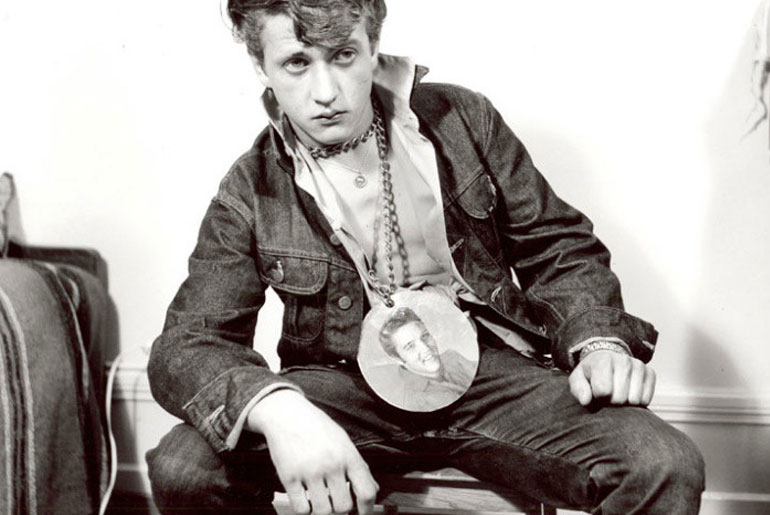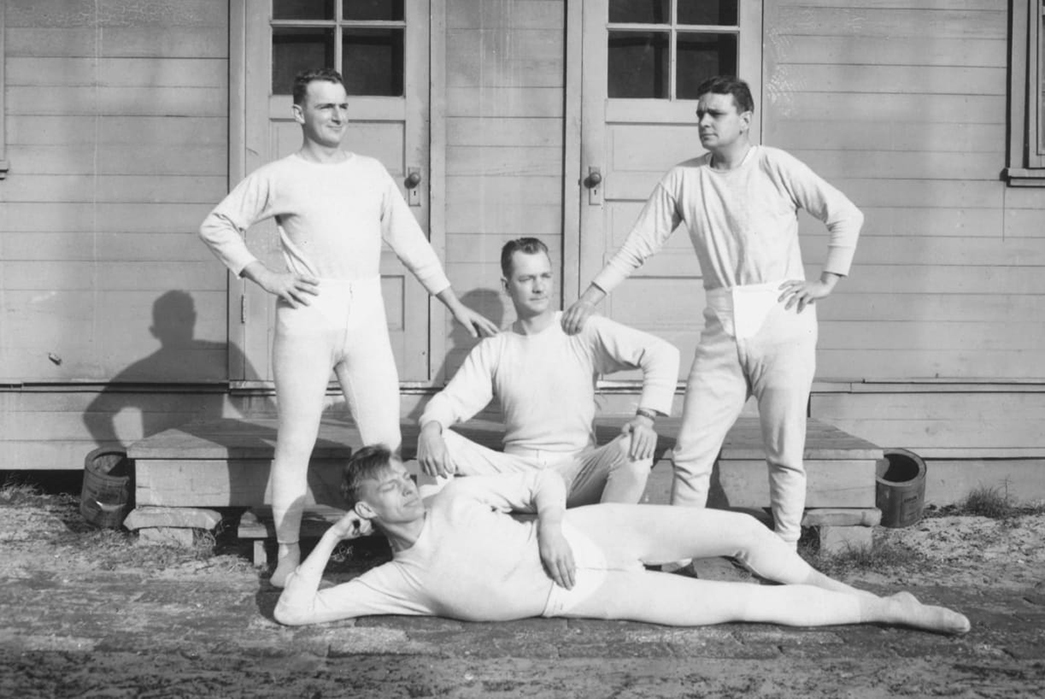- Heddels
- Posts
- Sept 10 - History of Engineer Boots - Heddels Shop
Sept 10 - History of Engineer Boots - Heddels Shop
Together with
Along For The Ride - The History of Engineer Boots
Arguably the most rugged boot on the block, we look at the history and context of the infamous Engineer Boot.
Forrest Old & James Smith

Few accessories endear as much badass-ery to denim as the mighty Engineer Boot. Steeped in motorbike heritage, the Engineer Boot was originally developed for men in the railroad industry but has become one of the most recognizable boots in the heritage boot market today.
In this article, we’re looking at the history behind this workwear icon and some of the best options on the market today with the help of repro workwear designer John Lofgren.
What is an Engineer Boot?

By taking the ruggedness of a logger boot and combining it with the simplicity of English riding boots, the engineer proved to be a versatile piece of footwear worn for a variety of functions. Its most distinctive traits are its stove pipe shaft, which can run all the way above the knee, and the buckle around the ankle.
Oftentimes a buckle is also found near the top of the boot to secure it to the calf area. While the welted sole is typically lugged, there are also a engineer boots that have kept it simple with a leather sole. The color? There are options, sure, but many enthusiasts believe they should always be black.
/ In Partnership with Heddels Shop /
You always need a good t-shirt and you need one that’s made to good standards as well. Our Union Made Teamster Tees are produced by unionized sewers operating under at Teamster contract to ensure they can bargain for the best working conditions, pay rates, and benefits to create a better product.
Have a look for yourself at our made in USA collection of knits and sweats.
Starting at $18 at Heddels Shop.
The History

It’s difficult to pin down when exactly engineer boots were first created. Chippewa and Wesco were two of the first companies to start producing them regularly in the 1940s, but they first appeared in the 1930s during the Great Depression. Designer John Lofgren, purveyor of American vintage and maker of reproduction engineer boots, lent his insight into the boot’s origins.
“They’re as Americana as the 5 pocket jean,” According to Lofgren. “Engineer boots were originally developed for men in the railroad industry. The tall shafts helped protect a fireman’s (the guy that shoveled coal into the engine) legs from rocks of coal, hot embers and the sharp edge of a shovel.”

Original Sears advertisements for engineer-style boots.
During World War II, engineer boots dropped out of favor as manufacturers went back to producing lace-up combat boots. But as the 50s approached, the boots came back and saw a boom in popularity.


Many veterans came back from the war and formed motorcycle clubs. For many of these enthusiasts, the engineer became the boot of choice. It didn’t have anything that could get caught in the many moving parts of the bike, was comfortable, and provided a modicum of protection. Most of all, they simply looked transgressive. Paired with a leather jacket, some raw denim, and a tee shirt, the look could weather any cultural change.


Movie star rebels such as James Dean and Marlon Brando were ubiquitously idolized by teenagers, who subsequently copied Dean’s look seen in movies like Rebel Without a Cause. For department stores like Sears, the engineer boots were a staple in their catalogs from the 1950s through the 1970s. For many a small-time delinquent or motorcycle enthusiast, this would be the only way to get their hands on a pair, depending on where they lived.
“Engineer boots transcend fashion,” As Lofgren puts it, “Fashionable people will always rediscover them every few years and thus the boot has a moment in the conscious of the mainstream every now and then. But for those who care more for a traditional look they’ll always remain in style.”

The ladies loved Dean, was it the boots?
What’s Available Today
Engineer boots have followed the recent resurgence of Americana (though they never really fell out of favor). But as it is with raw denim, designers have taken to crafting boots that far surpass the original incarnations in both quality and performance. Lofgren, for instance, personally spent weeks on each sample pair before going back to the drawing board and making improvements.
John Lofgren Engineer Boots Horween Chromexcel, available for $1,182 from Lost & Found.
Lofgren’s sampling process typically requires about five iterations and amounts to a year of trial and error. An engineer boot fan to begin with, he emphasized utilizing high-quality materials, like Horween leather and Vibram soles, and sourced production from ethical manufacturing. As Lofgren explains:
“The boots were a labor of love. Only people close to me know truly know the amount of time and money I put into the development of them. The travel that was involved, the meetings in various parts of Japan, developing the lasts, hotels, hours on the road, hours on the Shinkansen, international travel…I look back on it now and think it was just crazy. I spent so much that I couldn’t afford to make original buckles or half-size lasts.
First and foremost, the boot had to be ethically made. To ensure this all materials were sourced from places like Japan, USA, Italy, England and Australia. Production is done in Japan. It’s no secret that I like Vibram soles. The rubber compound is long wearing and comfortable to walk on. Vibram makes a lot of their soles in China now, but mine are made at the Quabaug plant in the USA. I will not use Chinese made soles. And I would be happy if people wouldn’t re-sole them with Chinese made soles. And that’s not so much of a quality issue as it is an ethical one.
I’ve always been less than impressed with China regarding the treatment of people and how the government uses its money to encroach on its neighbors and back nations like North Korea. I’ve spent a little time in China, I still have my Beijing University ID card to prove it. The people are great and the nation is beautiful. I wouldn’t want anyone thinking I have something against the average citizen there.”
All that effort certainly paid off in making a shoe that’s the envy of any boot enthusiast. At least until you hear the list price of around $1200.
John Lofgren Engineer Boots Horween Waxed Flesh, available for $1200 from Brooklyn Clothing.
Lofgren isn’t alone in producing such a superlative offering. Wesco‘s Boss model starts near $400 and rises by the hundreds depending on customization. Mister Freedom, for instance, makes similarly appealing options in the $700 to $1,000 range, and the obsessive-compulsive The Real McCoy’s makes a shell cordovan option that approaches $2,000 for their BUCO line. Enough money to make even the wealthiest of consumers have trepidation.
John Lofgren Wabash Engineer Boots Horween CXL Black, available for $1,182 from Lost & Found.
This is the high end of course. For those with less cash to burn, companies such as Cordobes, Craft & Glory, and Frye all make quality options at prices that are comparable to their standard lace-ups, approximately $350-550.
Cordobes Engineer Boots, customizable and available from $439 at Cordobes.
The Real McCoy’s BUCO Engineer Boots, available for $1950 from Clutch Cafe.
The engineer boot is firmly entrenched in America’s twentieth-century history and will likely be a fixture for years to come. Its simple masculine presence has been unaltered since its inception and beloved by men and women alike. Some say they’re not a boot, but an attitude. Can you pull them off?
For more info check out Vintage Engineer Boots, the source of many of the above photos.
What did you think of today's newsletter? |







